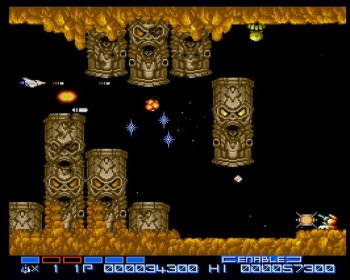|
HYPER EXCITING SPECIAL INVESTIGATE!
Youíll have to forgive Emu Zone if this monthís
column is a little disjointed, because your intrepid reporter has
spent the whole time wading through websites where all the text
looks like this:
ŚČÔā‚āŃāńāťāŐāÕāĪāĪā āĹāŤā©ā»ĀH
ĎŚĎչ͏Tä‘ā…ąÍČŮ
(thatís a direct cutínípaste quote, there), and
his brain appears to be broken. Excitingly, though, itís all been
worth it, because this month Emulation Zone is proud to present its
beloved readers with something a little bit special Ė a lost Super
Mario Brothers game. But weíll get to that in a moment. First, the
thrilling backstory.
One of the most obscure corners of the zany,
lovable world of emulation is the one devoted to Japanese home
computers. For obvious reasons, the Japanese donít tend to be very
fond of computers as a leisure device, so the country has always
been the worldís biggest console stronghold. Nevertheless, there
have been Japanese computers, and where there are computers people
will play games. So, throughout the 1980s and 1990s, a whole little
gaming subculture grew up around machines like the Sharp X-1, the FM
Towns, and the NEC PC-80 series. And where thereís a gaming
subculture, you can be sure thereíll also be some emulator authors.
The emulation of Japanese home computers,
though, is a daunting world for us saucer-eyed Westerners. The vast
majority of the emulators are written in Japanese, with Japanese
options and menus, Japanese documentation and Japanese home pages.
And since the emus themselves, being of computers, are rather more
complex to use than console emulators, your chances of being able to
get them actually working without a pretty comprehensive knowledge
of kanji are fairly slim, hence the dearth of information about both
the machines and some of the weird and wonderful games they can
play.
Thank heavens, then, for the Japanese Computer
Emulation Centre - a sparse and basic website which offers just
enough of a sliver of information to tip the balance and enable the
English-reading gamer to get a foot in the door of this strange but
excellent world Ė and your friendly neighbourhood Emulation Zone.
You need wander the virtual streets of Japanese computing as a
clueless and befuddled tourist no longer Ė just hold Emu Zoneís hand
while we make the merest of scratches on the surface of Nippon
computing for you, and see what we can reveal.
Downloads |











